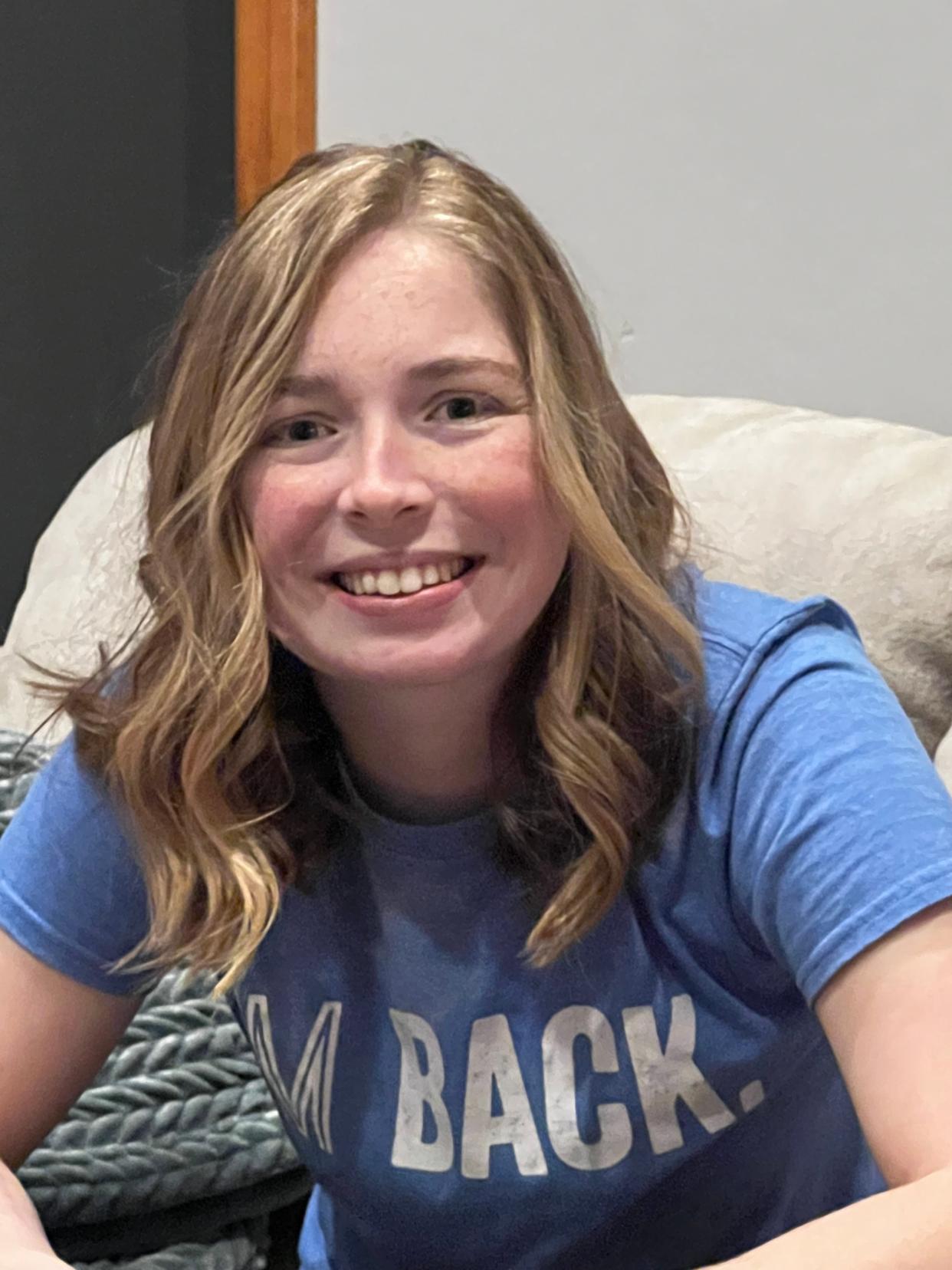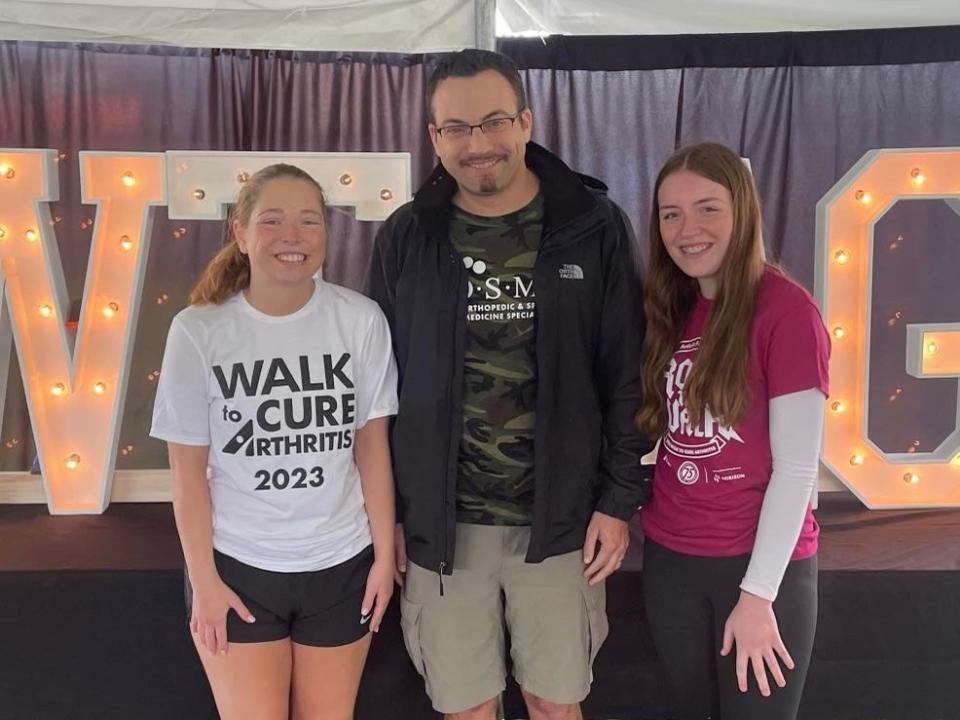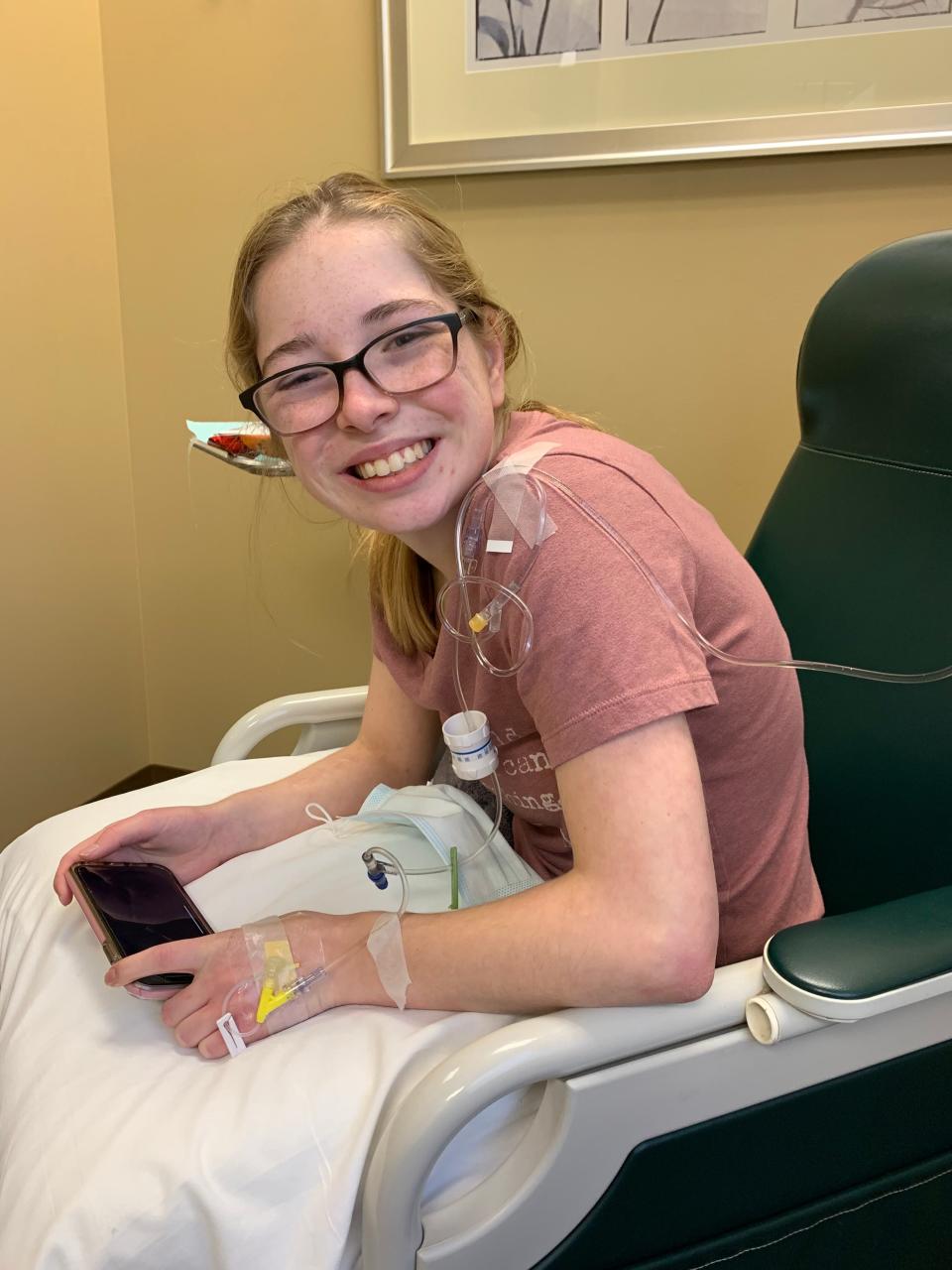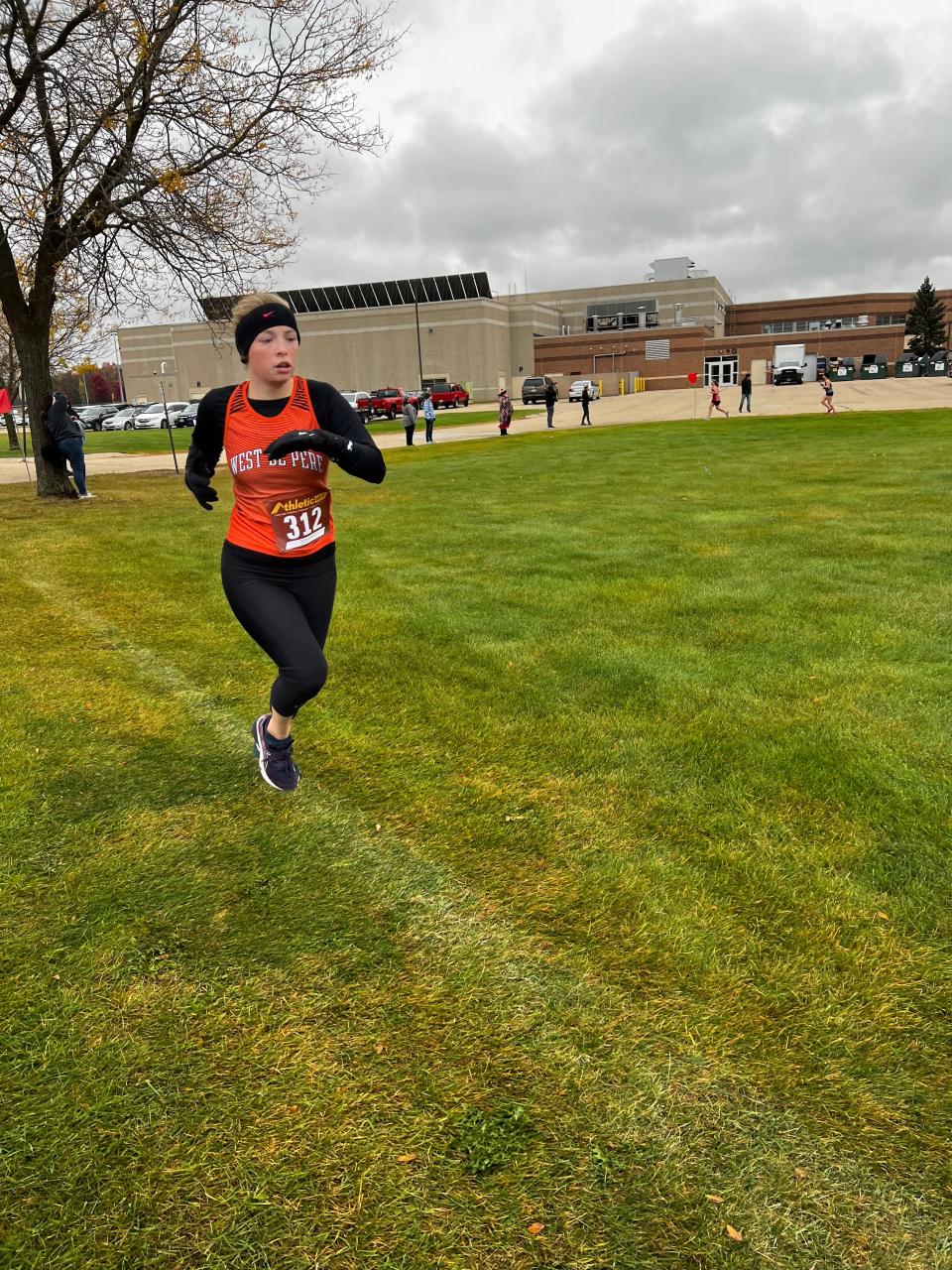A De Pere teen was diagnosed with arthritis when she was 12. Now she's off to college to help other kids cope.

DE PERE - In 2016, Mira Leurquin had a surgery that she didn't know would change her life.
Leurquin, 18, was performing a front handspring, which she had done many times before in gymnastics practice. But this time she tore her meniscus and had to have surgery to fix it. Her recovery was supposed to be quick, but Leurquin's knee just wasn't healing properly.
Her knee and joints started to flare up and became painful, so Leurquin went back to Orthopedic & Sports Medicine Specialists clinic in Green Bay after surgery. That's when her doctors realized she had arthritis at age 12.
Leurquin is one of 6,000 kids in Wisconsin who have juvenile arthritis, according to the Arthritis Foundation. Leurquin was diagnosed with juvenile idiopathic arthritis, which is the most common type of arthritis in children.
Dr. Paul Tuttle, a pediatric and adult rheumatologist at OSMS who treated Leurquin, has treated patients with arthritis as young as 2 years old.
In the first few months, the pain was so unmanageable that Leurquin had to be in a wheelchair at times. Now, she competitively dances and is back to running on her school's cross-country team.

Leurquin's diagnosis is not usually how juvenile arthritis is discovered, Tuttle said. Normally, the symptoms appear gradually over months or over a year, so it can take time to make the final diagnosis.
"It's very subtle typically but it does build on itself and become more obvious over time," Tuttle said.
Parents should look for symptoms, including:
Prolonged stiffness in the morning.
Limping or walking like an elderly person.
Stiff joints.
Swelling, redness, or warmth.
"These are signs there could be inflammation within the joints and it's not just growing pains," Tuttle said.

The painful, autoimmune disease occurs when the immune system attacks the body’s tissues, causing inflammation in joints and other areas of the body.
"It's not related to age or injury," Tuttle said. "There's this confusion the body has where the body starts attacking itself causing this inflammation."
Turning her diagnosis into advocacy
In the first couple years, Leurquin was still in a lot of pain. She had to stop playing sports and couldn't really do everyday activities.
Leurquin's teachers worked with her to make accommodations if she was having a flare-up one day. If she couldn't go to gym class in the morning because of her arthritis, she could sit out and join in extracurricular activities after school instead.
"It was hard," Leurquin said. "I was very exhausted and tired — I would come home, sleep, eat dinner, do homework, then go to bed and go to school and do it all over again."
At first, her treatment involved infusions every eight weeks, and she tried different medications.
Now she is in remission and takes one pill a day.
Leurquin used to not be able to walk herself to the bathroom because of the pain. Now, she's able to work two certified nursing assistant jobs, run, and dance without any or just a small amount of pain most days.

One of the hardest things about living with arthritis as a teenager is its invisibility, she said.
Some days while Leurquin was dealing with an unbearable amount of pain, no one could tell and thought she was doing fine.
"Some people expect it in older people," Leurquin said. "I know people could be in wheelchairs or we could be walking and we look like a normal teenager, but we're probably still in pain and you just can't really see it."
Leurquin is heading to Carroll University in the fall to give back the care she received. She plans to become an infusion nurse to support kids facing similar experiences that she did.
She credits the nurses and doctors at OSMS for supporting her and showing her how to cope with her juvenile arthritis. Now she wants to do that for others.
She has already become a regular speaker at events by the Arthritis Foundation in Wisconsin and a leader at support camps for kids with arthritis. Sharing her story empowers her, she said.
"Just knowing that I felt alone but being able to see there's arthritis groups now and connect with people on this and let them know they're not alone," she said.
Benita Mathew is a health and science reporter for the USA TODAY NETWORK-Wisconsin. Contact Benita at bmathew@gannett.com or follow her on Twitter at @benita_mathew.
This article originally appeared on Green Bay Press-Gazette: De Pere teen was diagnosed with arthritis when she was 12.

